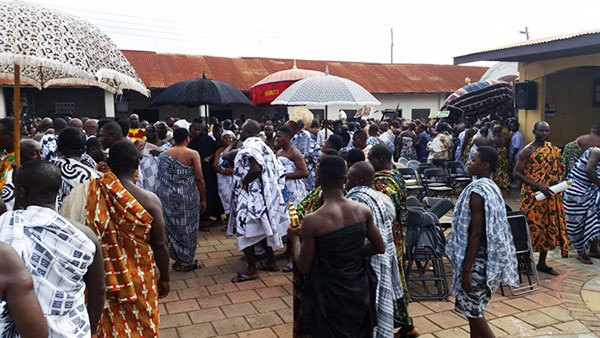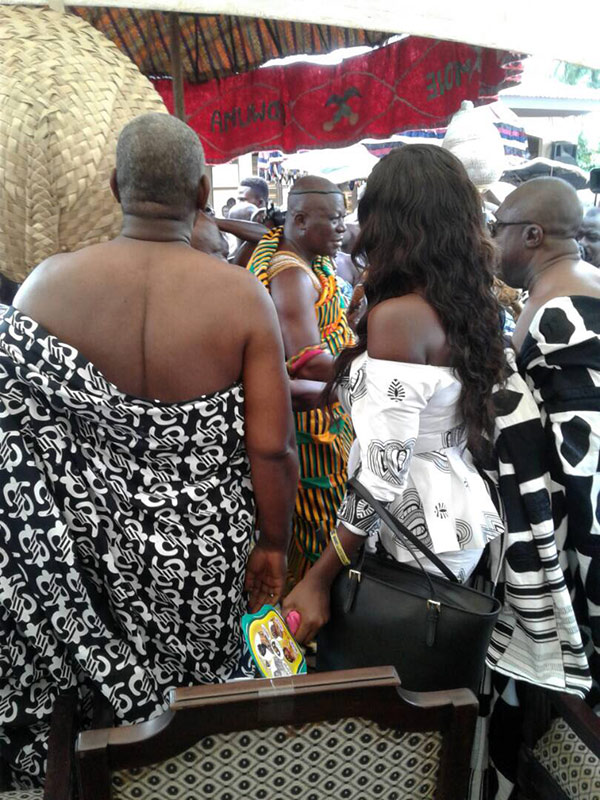
Eight University of Rochester students are participating in a field school in Ghana this summer, studying historic coastal forts built as early as the 15th century, with particular emphasis on Elmina Castle. Led by Professors Renato Perucchio, Michael Jarvis, and Chris Muir, and teaching assistant William Green, the students are studying the engineering, historical, and cultural aspects of these structures; visiting other points of interest in Ghana – and sharing their experiences in this blog.
We spent a nice weekend getaway in Kumasi, which is in southern Ghana. Kumasi is the seat of power of the Ashanti kingdom and has a lot of political, social, and cultural importance to the Ashanti people. Being able to experience the culture in Kumasi was significant because although we tend to think of Ghana as a single, uniform country, it is quite diverse in terms of language, food, traditions, and dress. Some of the highlights of my weekend included eating fufu — a starchy food made of cassava and plantain flour—watching an important Ashanti ceremony, and meeting a local chief. Overall, the weekend was very memorable and I reluctantly left Kumasi hoping to return sometime in the future.
Our visit happened to land on the weekend of a big ceremony called Akwesidae. Akwesidae is celebrated every sixth Sunday and is a time for the Ashanti people to honor their individual and collective ancestors. The ceremony took place in the Manhyia palace. Although it was about 90 degrees in the afternoon sun, there were a lot of guests in attendance, among them the minister of energy (Honorable Agyarko), delegates from Nigeria, and chiefs from surrounding villages. In addition to these special guests, there were also a lot of local people and foreign visitors in attendance. What first caught my eye when we entered the courtyard were the sprawling decorative umbrellas surrounding the area. These umbrellas served to keep away the sun and identify which groups were in attendance—as each umbrella was uniquely decorated with symbols, colors, and designs specific to that region. Under each umbrella one would find the chief of that village sitting or standing proudly surrounded by other members of his village.
During the ceremony, each chief or group of individuals would approach the Asantehene, Osei Tutu II, with gifts and words of gratitude for what he has done for them. The word Asantehene is the term used to refer to the ruler of the Asantehenedom of the Ashanti. Similarly, the term Asantehemaa is used to refer to the queen mother of the Ashanti. The custom is to present the king with Schnapps (as most did), but I also saw people give him goats and vodka. An interesting thing I noticed is that when the person(s) speaking gave their short speech they did not directly address the Asantehene. Rather, they would speak to the crowd and the Asantehene’s messenger would relay their message to the Asantehene. After they were done, they would shake hands with the Asantehene and then return to their seats. It is also important to note that the guards told us that taking photos during the ceremony was forbidden, so my entire recollection of the ceremony is based on what I saw from the back row of the courtyard. Although we did not get the privilege of meeting the Asantehene, I got a close glimpse of him during the procession following the ceremony.
Later in the evening, we met with a local chief who works very closely with the Asantehene, Nene Prempeh. Nene Prempeh is a close friend and past college roommate of Professor Gavua, the dean of the University of Ghana School of Arts and one of the directors of the field school. I could tell that when we arrived, we were all a bit nervous to be visiting the home of a chief. However, as soon as we met Nene, he greeted us all with a warm smile and handshake and invited us to sit in his guest room for drinks.
While sipping our various drinks, Nene answered the questions we had about the ceremony and the Ashanti kingdom, and joked with Professor Gavua about their time together in college. At one point, Nene stood in the center of the room to demonstrate the game-winning penalty kick he delivered at a college soccer game. After our chat, Nene gave us a tour of his spacious home and invited us whenever we needed a place to stay while in Kumasi or Accra. I may just take him up on his offer one day.


Naomi Rutagarama ’18 is a political science major.
